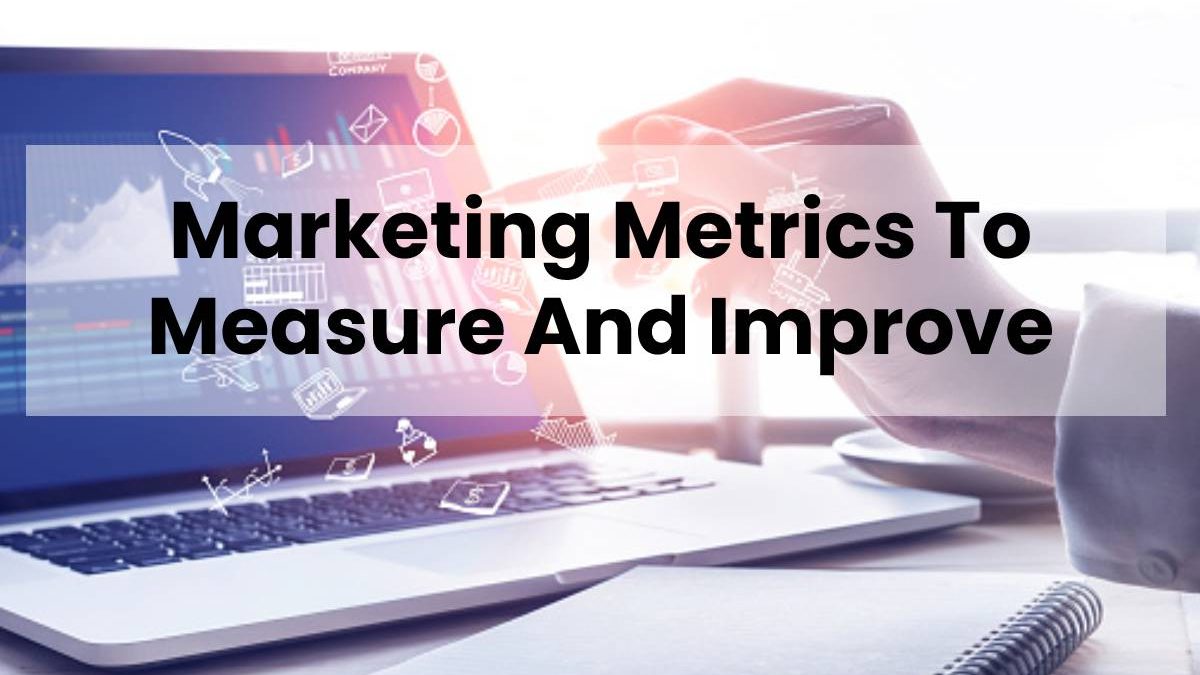Marketing Metrics
The art and science of marketing—creativity, and data—are carefully balanced. Historically, art dominated marketing; however, digital platforms, channels, and substantial technological advancements heralded the era of data-driven marketing or the science of marketing. Marketing professionals now evaluate the success of creative processes and concepts using analytics.
Eighty-nine percent of top marketers, according to Google, gauge the success of their advertising efforts using measures like customer lifetime value (CLV), gross revenue, or market share. A company’s success or failure may depend on proper marketing measures.
Marketing spending has come under closer scrutiny since the outbreak started earlier this year. The IAB, the trade group for the advertising industry, projects that in 2020, the overall amount spent on conventional media will decline by 30%. Given this fact, analytics might be a marketer’s greatest ally in focusing on cost optimization and enhancing ROI in marketing.
How Do Marketing Metrics Work?
Marketing metrics are quantifiable statistics used by marketers to gauge the effectiveness of their content and advertising campaigns across all marketing channels. Both conventional and digital media can use these parameters. The proper ones pertinent to the particular business situation must remain pursued.
To boost income and sales, businesses in the real world frequently use a combination of conventional and digital communications. For instance, an offline business would seek to gauge marketing performance using measures like average foot traffic, average purchase value, and brand recognition. A firm that relies heavily on digital marketing also has extremely different KPIs.
Five Marketing KPIs to Fuel Business Success
Let’s look at some of the most important marketing metrics for businesses this year and beyond now that we’ve defined what they are and why they’re essential for success.
1. Leads
The most vital sign of marketing success is lead creation or leads. Lead generation is the top objective for 63 percent of marketers, according to HubSpot (2). It establishes the company’s potential for future revenue generation. When a consumer makes a purchase, their status as a prospect ends. It marks a turning point in their customer journey. The most important statistic is their purchase since it creates income.
Leads can remain qualified as they progress through the marketing funnel, depending on the subsequent predicted behavioral consequences. They can remain broadly classed as qualified leads for sales or marketing.
Here is a brief explanation of each of those terms:
- Leads most likely to convert to clients are marketing qualified leads (MQL) based on lead intelligence. These leads display particular engagement or activity related to important marketing KPIs like content downloads, website visits, or incoming inquiries.
- Sales teams frequently use the phrase “Sales Qualified Lead” (SQL) to refer to prospective clients. Compared to marketing qualified leads, sales qualified charges are nearer to making a purchase. By putting a value on particular pieces of content collateral or behaviors, sales and marketing professionals may further score these leads.
2. ROI For Marketing Initiatives (Romi)
The amount of money a marketing campaign brings in relative to how much it costs to conduct is called return on marketing investment. With these data, marketers may assess how well their initiatives are doing and how they are advancing their business. Although calculating Romi can appear quite simple, it can be not easy.
Markets struggle to remain on top of each campaign due to the sheer volume of marketing content and initiatives. Additionally, it could occasionally be challenging to link marketing messaging to channels and campaigns. To manage campaigns and automate Romi calculation, we advise adopting marketing platforms or end-to-end suites.
3. Stranger Traffic
The quantity of people that arrived at your website directly from another website rather than finished a search engine remains referred to as referral traffic. Backlinks and social connections are the usual sources of referrals. Businesses with the proper backlinks gain from an increase in referral-based website traffic.
To track referrals, marketers most frequently utilize UTM tracking codes, and they may get detailed information from Google Analytics or other specialized analytics tools.
4. Total Website Traffic
Once again, Google Analytics is the tool for marketers to gauge website traffic. Total website traffic is a reliable predictor of the effectiveness of content, and it aids marketers to determine how visitors receive well content campaigns or website material. Marketers may alter their dashboards to emphasize optimization or upgrades by dividing total traffic into that coming to target pages.
5. Reviews and Testimonials
Today’s marketers must rely heavily on customer feedback and reviews. Especially in the current environment, customers increasingly prefer to make purchases through digital and internet platforms. Customer trust increases, your product or service gains legitimacy, and testimonials and reviews may inspire future purchases. Let’s briefly review how reviews and testimonials can remain evaluated in each case:
- Testimonials: Measuring testimonials might be a bit challenging because most marketing suites don’t offer specialized features. Testimonials’ efficacy can remain determined by combining data like views, profile clicks, or produced leads. Additionally, you may use A/B testing to decide which testimonies and how they affect visitors’ behavior.
- Reviews: Reviews in this situation are similar to those you write on Amazon; they describe how you found the good or service to other users. Thoughts are one of the most significant factors influencing purchases in a time when customers rely on recommendations from the public to guide their selections.
Review measurement is rather simple: if the overall rating of reviews rises, customers are content and delighted. Conversely, a decline in comprehensive reviews indicates that you need to improve your product or service.
Conclusion
What are the purposes of marketing metrics? Marketing metrics are numbers that marketers may track to gauge the effectiveness of their advertising initiatives. These metrics can demonstrate how successful your marketing initiatives motivate consumers to take activities that provide value.
Related Searches:
[what are marketing metrics]
[marketing metrics to measure success]
[types of marketing metrics]
[marketing metrics and analytics]
[10 marketing metrics]
[marketing metrics 2021]
[what are the 5 marketing metrics]
[marketing metrics are measures that are used to mcq]
Also read: Benefits Of Pursuing A Career In Business

